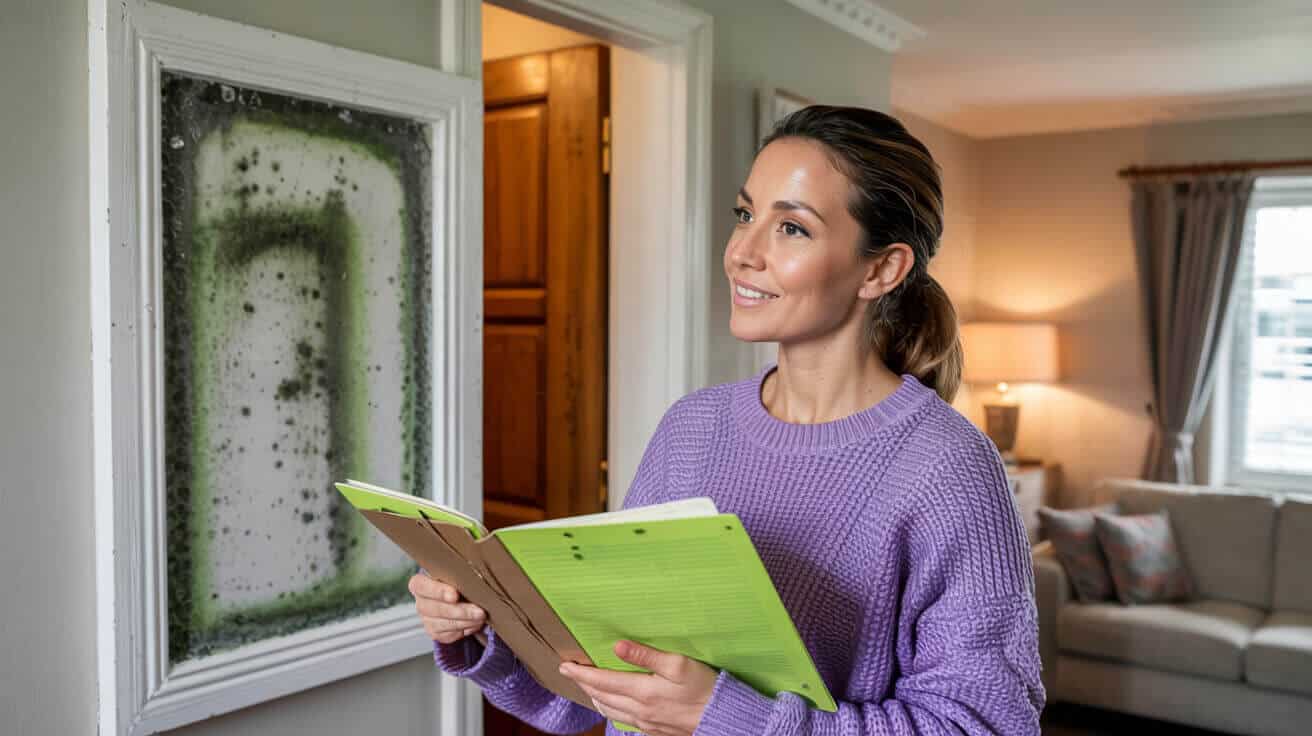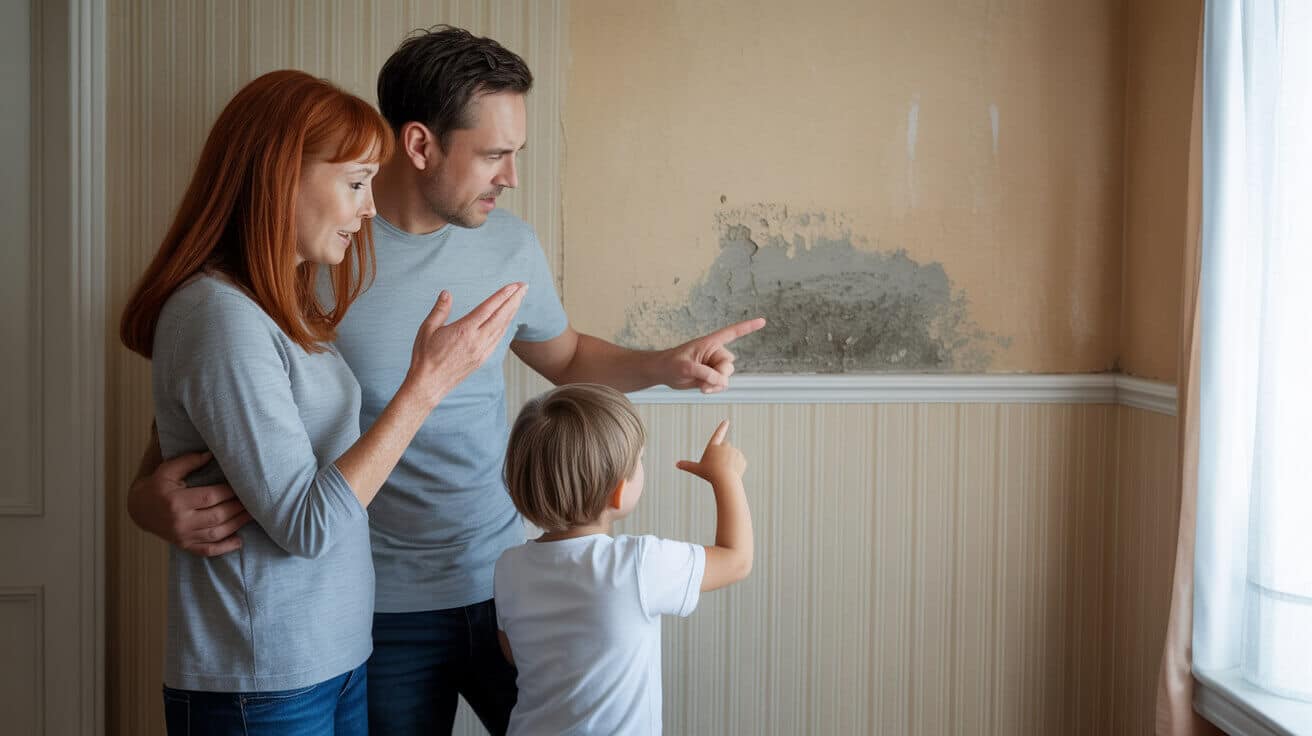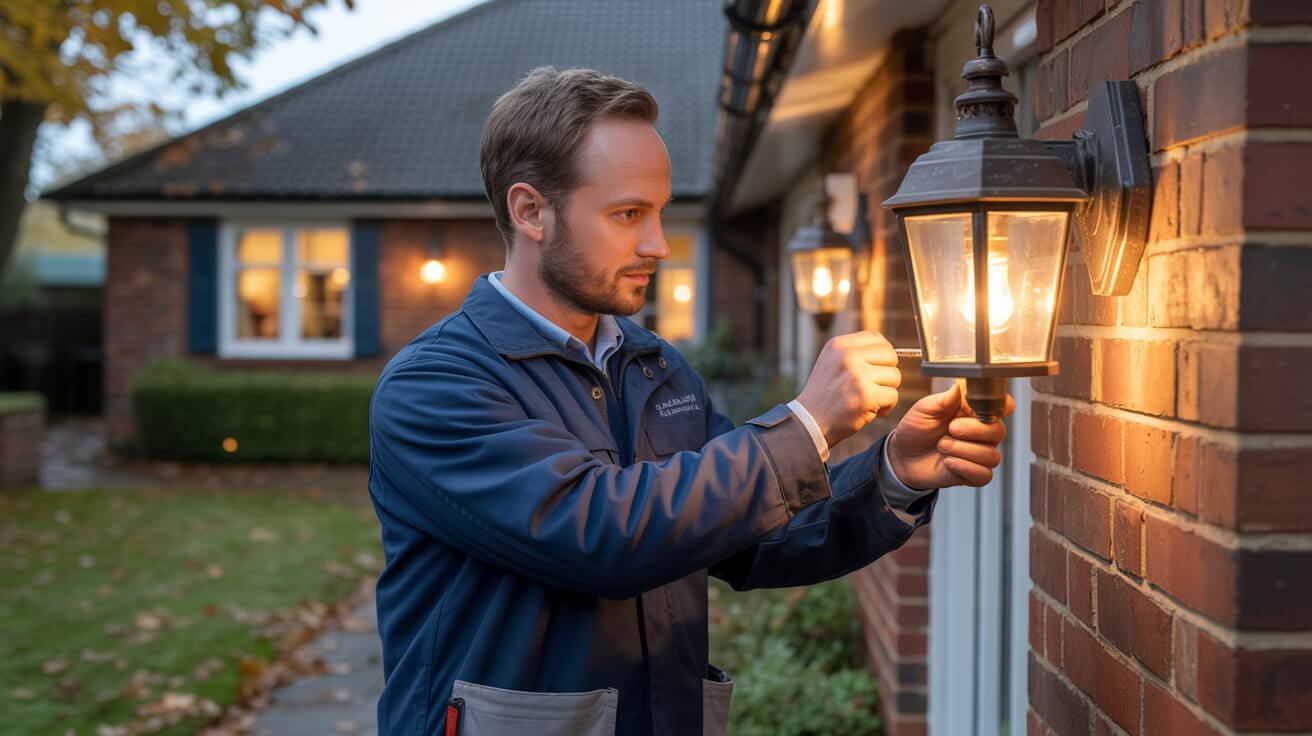 The Renters (Reform) Bill What Are Your New Maintenance Obligations For 2026
The Renters (Reform) Bill What Are Your New Maintenance Obligations For 2026

Who Really Needs to Worry About the Renters (Reform) Bill—and Why Maintenance Obligations Are Changing for Every UK Landlord
Most landlords still underestimate the scope of the Renters (Reform) Bill. It’s tempting to believe “we’ll be fine; we always patch things up eventually.” But 2026 doesn’t just bring a new set of rules—it redraws the frontline between landlords, tenants, councils, and insurers. Every rental asset in the UK moves under a microscope where maintenance isn’t about appearances but solid, logged, provable action. Gone are days of ad hoc fixes and “take my word for it” landlordship.
Today, your good intentions don’t matter—only digital evidence and audit trails count.
The new rules impact everyone: accidental landlords, property investors with dozens of units, lettings agents running portfolios, and facilities managers for blocks or converted houses. Even if you “always do repairs,” now you must prove it, instantly, in an inspector’s acceptable format. Digital registers, tenant reporting portals, tough council spot-checks—these are the new normal. Fines aren’t the worst of it; rental income, reputation and resale value are all at risk. The biggest losers? Owners who scramble at the last minute, hoping lenience will protect them. That era is over.
The Reality: No Landlord Is Exempt—And “I Didn’t Know” Doesn’t Cut It
Whether you manage a single flat or hundreds of units, the legislation assumes you operate with full compliance knowledge. There’s no “vanilla fix” anymore. Every missed email, slow response, or half-logged job becomes a liability. This reset isn’t about scaring you into action; it’s about preventing (and penalising) silent neglect baked into bad habits. Smart landlords are moving now—refining workflows, upgrading record-keeping, building relationships with compliance-first service partners.
Good landlords use compliance as a shield, not a distraction.
What Exactly Is the 2026 Decent Homes Standard—and How Does It Redefine “Safe Enough”?

The Decent Homes Standard (DHS) is the line in the sand for 2026. Previously, only the social housing sector felt its force. Now, every private rental property falls under its scope—no loopholes, no grace period based on size or age. If you thought “my property’s tidy, should be fine,” think again.
At its core, the DHS says: If there’s any hazard—however minor, however hidden—you must fix it, log it, and prove it. There’s no margin for “good enough.” Whether your property is a city flat, a Victorian terrace, or a new-built duplex, the same requirements land. Inspectors—and tenants—look well beyond surface condition. Damp patches, sub-par insulation, tired wiring, worn-out seals, and draughty windows that once seemed minor are now flagged as material risks.
Looks fine doesn’t stop a compliance breach—hidden risks are what inspectors probe now.
What do you need to deliver?
- Modern, certified electrics—documented by a Part P-registered engineer, not an “I’ve fixed loads before” mate
- Structural security: dry, sound walls, ceilings, and floors—free from mould, peeling, or bubbling paint
- Functionally decent kitchens and bathrooms—safe, healthy, clean, with no “original but worn out” leeway
- Consistent, efficient heating and hot water systems; wobbly radiators or temperamental boilers are red flags
- Hazard-free ventilation: black mould, condensation, and tired seals are now urgent risks, not lifestyle “nice-to-haves”
Data point: Shelter’s 2024 research finds over 80% of local authorities are investing in new digital inspection tech and staff for stricter checks under the 2026 regs (Shelter, 2024). That means more surprise visits, less ambiguity, and minimal tolerance for “paper-thin” compliance.
When Superficial Upgrades Fail—and Your Risk Multiplies
Many landlords rely on tradition: “If it’s worked up to now, it’ll be fine.” But under Decent Homes audits, you risk being classified as non-compliant for:
- Relying on cosmetic upgrades or patch repairs
- Delaying modernisation of old heating, wiring, or insulation
- Lacking full documentary evidence for all work since tenancy began
These aren’t just tick boxes—council teams can issue fines or block new tenants until fixes meet DHS levels. Public “non-compliance” lists, rising insurance exclusions, and tenant-triggered enforcement are the new penalties for sloppiness or delay.
How Does Awaab’s Law Change the Rules on Repairs, Damp, and Mould Complaints?

Awaab’s Law is the muscle behind enforcement. It started with tragedies—avoidable deaths tied to neglected damp and mould. In response, every delay or paperwork gap now carries legal teeth:
- 14 days: Log, inspect, and record tenant reports about hazards (damp, leaks, electrics, mould)
- 48 hours later: Issue a written update to the tenant—email or portal
- 7 days from confirming a hazard: Complete urgent repairs, book works, or begin extensives, each documented and evidenced
This turning point means you can’t buy time with promises or vague updates. A complaint is a legal time bomb; every hour that passes without a logged action or written update increases your exposure and makes council intervention more likely.
Every damp patch is now an official countdown—ignore it, and the law closes in.
Why Documentation and Deadlines Are Non-Negotiable
If you can’t show a clear digital timeline—dates, times, photos, job status, tenant comms—you’re automatically on the back foot. Councils presume “no proof” equals “no action.” If you’re still juggling paperwork, text trails, and memory, you’re courting disaster.
Savvy landlords and agents now systemise maintenance so every action—call, visit, repair, photo—is captured by default in a digital logbook, fully audit-ready at any moment.
Does Your Existing Lease Protect You—Or Leave You Exposed Under Section 11?

Common belief: “Our tenancy agreement spells out who’s on the hook for what—so we’re covered.” But post-2026, the contract language doesn’t shield you from statutory duty.
Section 11 of the Landlord and Tenant Act, refined by the Renters (Reform) Bill, makes landlords unconditionally responsible for:
- Structure and exterior, heating, and electrics—*even if you include ambiguous “tenant agreed to fix XYZ” clauses*
- Drains, sanitation, and fire safety—no transfer of duty to tenants, regardless of signatures or side agreements
- Prompt response: the law, not your contract, governs repair deadlines, reporting, and documentation
No matter how water-tight you think your contracts are, the law always trumps the lease.
Insurance, Rent Withholding, and Council Escalations
You’ll feel the new risk in three places:
- Insurance: Providers can void claims if you breach repair laws or miss required upgrades, even if damage arises from tenant neglect. “But they signed a waiver” doesn’t cut it.
- Rent Withholding: Tenants can hold back rent if urgent repairs lag—or escalate to council, which can block future lets or issue fines.
- Public Track Records: Repeat offenders see their properties listed on public databases, directly impacting asset value and sale or refinance prospects.
Contracts aren’t compliance shields; only systemised, law-driven maintenance and audit-ready evidence deliver lasting protection.
Why Digital Maintenance Logbooks Are Now a Landlord’s Legal Safety Net

Loose paperwork, hand-written diaries, or “I trust my memory” habits aren’t viable anymore. Digital logbooks are now your most powerful compliance tool.
What do they offer?
- Instant Evidence: – Every repair, visit, and complaint is time-stamped and assigned to a named party
- Photo Audit Trail: – Before/after imagery proves you’ve acted, demystifies disputes, and satisfies council demands
- Zero Ambiguity: – Digital systems, not spoken or manual records, are audit-ready for spot-checks or insurer queries
- Ease of Access: – No more “lost paperwork”: every repair chain, from complaint to closure, is retrievable in seconds
If you can’t retrieve proof on demand, councils may treat it as if repairs never happened.
Digital systems aren’t about ticking a tech box—they’re shields for your income and assets. Landlords who upgrade to digital logbooks in 2024-25 are “first in line” for fast insurance settlements, reduced council attention, and happier tenants. All Services 4U embeds this audit trail into every service, making sure your compliance is one click away, not buried in dusty binders.
What Day-to-Day Maintenance Steps Guarantee You Stay Within the Law?

The compliance gap between ordinary and top-performing landlords isn’t hours of extra work. It’s simply different habits, smarter structure, and alert systems that prevent downtime, fines, and tenant complaints.
Blueprint for staying legal and ahead:
- Schedule at least one whole-property inspection yearly, covering structure, electrics, heating/ventilation, insulation, and hygiene
- Use a multi-trade, accredited partner—combining repairs, compliance checks, and evidence in one streamlined workflow
- Log every repair, check, and tenant interaction using digital tools—never leave documentation to chance or “catch-up” notes
- Activate “Awaab mode” on any complaint: record, inspect, update, close—and stick to the law’s 14-day/7-day deadlines
Fail on the logs or skip photo proof, and you risk as much as if you left the roof leaking.
Combining inspections, repairs, and reporting in a single, tech-backed session doesn’t just meet council standards; it makes maintenance efficient. Trusted partners like All Services 4U roll each of these compliance steps into one annual (or quarterly) plan, ensuring nothing slips through the cracks.
What Are the Real-World Risks for Landlords Who Don’t Step Up?

It’s easy to underestimate the cost of delay. The real penalty isn’t just fines or awkward calls from tenants—it’s public blacklisting, squeezed insurance, and permanent asset devaluation.
Delay or miss a maintenance beat, and you risk:
- Public listing on “bad landlord” registers *(MHCLG, 2024)*—reducing property value and future rental prospects
- Immediate, escalating fines: up to £7,000 per breach, per property
- Insurance claims denied for incomplete or late upgrades and repairs
- Frozen sales or rental listings if compliance is absent or contested
- Fast-track tenant escalation to councils, forcing urgent corrections (often at inflated cost left to you)
Compliance isn’t costly; the price of ignoring it is what drains your cash and reputation.
Landlords who systemise, bundle, and evidence their maintenance run “clean.” They encounter fewer issues, lower stress, reduced fines, and hit the “trusted landlord” list with both councils and insurers.
What Makes All Services 4U the Ideal Partner for All-In-One, 2026-Proof Maintenance?

You can patch things together with patchwork contractors and spreadsheet logs—until the rules bite. All Services 4U solves that risk at the source.
What does a bundled approach solve?
- One partner, many trades: plumbing, electrics, heating/HVAC, roof checks—all serviced in a single, booked operation
- Digital logbooks as standard: every job, photo, and compliance certificate stored and ready for inspection
- Fire safety, audits, and asset upgrades: are included every time—no forgotten tasks, no scope drift
- Accredited, compliance-obsessed professionals: City & Guilds certified, DBS vetted, and up-to-date with new regulation
When every asset has a readable, up-to-date digital record, you make council visits painless and reduce the threat of random spot fines.
Making maintenance compliance automatic means fewer callouts, less downtime, reduced admin—and stronger stakeholder trust from day one. Only all-in-one providers can deliver this efficiency and security in the fast-approaching regulatory environment.
Secure Your Properties—Book a 2026-Ready Maintenance Plan with All Services 4U
Procrastination is no longer low-risk: enforcement, lost income, and reputational harm will all catch up. Act early and you flip compliance from stress into strategic advantage.
- Bundle inspections, repairs, and proof: into a single, frictionless workflow with All Services 4U
- Access digital compliance logs: for every asset—ready for councils, insurers, and peace of mind
- Receive proactive alerts and updates: —every fix is tracked, evidence delivered, and deadlines never missed
Book a full audit, ongoing maintenance, or tailored compliance plan with All Services 4U. Step into 2026 as a landlord whose assets are safer, tenants are happier, and legal risks are contained.
The era of I hope that’s enough is over. Now, only documented action counts.
Frequently Asked Questions
What are the key ways the Renters (Reform) Bill reshapes maintenance and compliance duties for property owners?
Landlords must now prove their property is always “decent” and compliant, not just fix issues after complaints. From 2026, every private let must meet the Decent Homes Standard—a measurable, council-enforceable set of criteria that demands preventive care, digital proof, and continual upgrades. The risk shifts from reactive fines to proactive monitoring: if your documentation is missing or your home drops below standard, council inspectors can penalise and even name properties in public records.
One missed inspection could cost more than a year of routine upkeep.
How your day-to-day responsibility changes
- You’re expected to log every property inspection, repair, and preventive action with photos and timestamps.
- Insulation, ventilation, fire safety, heating, and kitchens or bathrooms must hit the Decent Homes baseline—not future projects or aspirational upgrades, but day-one requirements.
- Councils can audit or spot-inspect you at random; there’s no “grace window” for slow paperwork or undocumented fixes.
- All Services 4U’s bundled audits, logbooks, and digital scheduling help property owners prove diligence under pressure—delivering not just updates, but a living audit trail that pre-empts risk.
The power of documentation
The law presumes, “if it’s not logged, it didn’t happen.” Keeping a digital-first maintenance record is as fundamental as having building insurance. A single gap in your logbook exposes you to hefty fines and spoils trust with tenants—leave nothing to memory or manual reports.
How is the Decent Homes Standard different from previous maintenance laws like Section 11?
Past UK law let landlords “wait for a problem”—repairs happened only after tenant complaints, and paper records or memory often sufficed as evidence. The Decent Homes Standard flips the script: landlords must systematically monitor, anticipate, and record preventative upkeep. The burden shifts from intent or goodwill to digital proof and year-round property health.
Today’s standard is preventive action, not just reactive repair.
The operational transformation at a glance
- “Suitable for habitation” now expands to thermal comfort, modern amenities, air quality, fire safety, and documented inspections.
- Every repair, upgrade, or safety check is a compliance event—if it’s missing from your digital log, enforcement sees it as undone.
- Missed gas, electric, or fire checks are now high-exposure liabilities, not minor oversights.
- With platforms like All Services 4U, inspection routines and digital logbooks become core business functions—making renewal and compliance a predictable workflow, not a crisis response.
- The new law holds you responsible for issues tenants haven’t even noticed, so historic “let it slide” approaches risk public fines and council intervention.
Stepping beyond minimum legal compliance
Landlords who stick to “old habits” may find themselves under scrutiny, facing not just private disputes but open regulatory penalties. Those who standardise record-keeping and tap into integrated maintenance support will streamline letting, shorten audits, and protect property value.
Which routine upgrades or repairs now count as mandatory for legal compliance?
Modernisation is now non-negotiable: insulation, energy ratings, ventilation, robust fire protection, and hygienic amenities are essential. Landlords have to demonstrate every system and surface meets statutory codes, and back up claims with digital entries for each action taken.
Best practice has become baseline law—especially for energy, safety and hygiene.
Non-optional compliance upgrades
- All visible damp, defective electrics, leaking pipes, missing alarms, and unsafe gas appliances must be resolved, with before/after evidence.
- Kitchens and bathrooms must meet functional, modern standards—think “council house quality,” not minimum legal fit-out.
- Energy upgrades—insulation, draught-proofing, and efficient heating—are enforceable, aligning private lets with EPC ‘C’ targets.
- All annual certificates (gas, electric, fire) must be refreshed before expiry, stored along with every work receipt and photo in your digital log.
- All Services 4U combines upgrades across core trades, ensuring bundled project booking, fast turnaround, and hands-off regulatory sign-off.
How enforcement has intensified
Routine checks are no longer discretionary: missed or overdue maintenance is an instant violation, even if tenants are content. Digital log templates and accountable scheduling reduce hidden risk and smooth the path through random council audits—translating upgrades into higher property value and regulatory resilience.
What are the practical legal duties for damp, mould, and ventilation—especially after Awaab’s Law?
Landlords face time-bound legal obligations for every damp, mould, or vent-related tenant report. The “Awaab’s Law” reform means you have just 14 days to execute a formal inspection, two days to update tenants in writing, and seven days—sometimes only 24 hours—to resolve proven hazards. The era of blaming tenant “lifestyle” is over: landlords must demonstrate the issue’s cause was found and remedied, supported by photographic and scheduling evidence.
Damp is now a regulatory hazard—not just a cosmetic flaw.
What a compliant response should include
- Investigation, with a logged, written response to the tenant, within 48 hours.
- Inspection and fix, including upgrades to ventilation, insulation, and extraction, within 7 days—or 24 hours if a health risk exists.
- Clear, time-stamped progress reports and before/after photos.
- Proof of communication and remedial action, not just intent.
Staying ahead of damp and ventilation claims
Proactive scheduling of extractor upgrades, insulation improvements, and airtight reporting matters more than ever. Bundled services (like those from All Services 4U) can automate surveys, alert you to inspection windows, and flag recurring issues before they escalate into penalties.
What features must my digital maintenance logbook include to satisfy regulators and deter fines?
A bulletproof property logbook creates a real-time audit trail: councils want to see time-stamped entries for every inspection, receipt, repair, and certificate. Data must be stored in a secure, retrievable format with search functions and photo/file attachments—not scattered emails or handwritten notes. tenant communication logs, annual sign-offs, and contractor credentials should all be linked to the property record.
If it’s not in the logbook, it might as well have never happened.
Constructing a future-proof logbook
- Enter every fault, inspection, site visit, and fix as a new digital record—tagged with time and detail.
- Attach supporting files—before/after photos, gas and electric certificates, receipts, and contractor ID.
- Pre-book annual compliance tasks (gas, electric, alarms, roof) and receive reminders for renewals.
- Store all tenant dialogue, especially reports, responses, and outcomes, as part of the compliance file.
- Templates from All Services 4U align with new council guidelines and reduce “lost in translation” errors.
Why it pays to invest in digital records now
Inspection readiness becomes real-time, not a last-minute scramble. Digital logbooks cut audit duration, simplify property sale or refinancing due diligence, and ensure fines never arise out of missing paperwork.
How can property owners future-proof maintenance strategy for stricter post-2026 laws?
Switch to digital-first compliance now: book a cross-trade audit, digitise your historical records, phase essential upgrades, automate reminders, validate each certificate with a photo, and train tenants on hazard reporting. The fastest-growing risk is delay—landlords who act early see fewer vacancies, faster renewals, and better market reputations.
Tomorrow’s trusted landlords prepare today—before fines and notices appear.
Tactical checklist for proactive property protection
- Commission a full property compliance audit today; cover all critical systems, amenities, and energy improvements.
- Bulk-book upgrades for energy, heating, roofing, and safety—cutting both downtime and cost.
- Digitise all certificates, receipts, and legacy records now for the government’s new Property Portal.
- Pre-schedule annual checks with calendar reminders—avoid last-minute rushing or missed compliance.
- Provide tenants with clear, friendly hazard reporting guidelines—they are part of your audit process.
- Adopt integrated bundles like those from All Services 4U: from inspection to logbook to council queries, you’ll be covered end-to-end.
- Stay informed on code changes and emerging council enforcement trends—position your business ahead of the regulatory curve.
Competitive advantages of early adoption
Letting is increasingly reputational. Digital compliance frees you to focus on scaling, secures higher retention, and builds a portfolio that stands up to scrutiny—a necessity as legislative pressure mounts and audit stakes grow.
Property maintenance after the Renters (Reform) Bill is no longer about playing catch-up. It’s about strategic leadership—visible in your records, your upgrades, and your readiness for anything the council (or tenants) throw your way. All Services 4U is your partner in moving from minimum compliance to undeniable, stress-free authority in property management.



